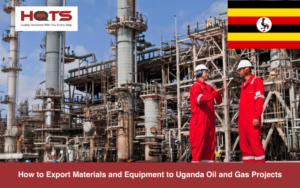When dealing with import, export, and footwear creation, regulations are implemented to ensure that the product’s safety and quality standards are upheld. Several governing bodies manage the rules, and in the United States, all working environments are managed by the Occupational Safety and Health Administration (OSHA) regarding regulations.
The OSHA works closely with independent non-profit organizations that create the standards which must be enforced, such as the ANSI (American National Standards Institute) and ASTM (American Society for Testing and Materials). But when looking at the ANSI and ASTM, many organizations find their differences confusing. Although these organizations impact the regulations of protective footwear, there are distinct differences that must not be overlooked. In this article, we’ll explain ASTM vs ANSI and clarify their differences.
What Is Occupational Safety and Health Administration (OSHA)?
OSHA, or the Occupational Safety and Health Administration, is an organization that enforces regulations set out by the government body and is a part of the United States Department of Labour. Their focus is specifically on providing safe working conditions for workers. Within this includes processes and equipment such as protective footwear.
It is essential for all PPE used in the U.S. to conform to the requirements set out in the 1910.136 standards. For protective footwear. In this standard, the footwear is required to conform with the ASTM F2412 05 standard, which we’ll take a deeper look at.
What Is ANSI?
ANSI is an acronym for the American National Standards Institute, a non-profit organization whose primary focus is on providing voluntary guidance on product safety and conformity specifications for various industries within the United States, covering regulations including work environments.
ASNI as an organization does not directly develop ASNI standards itself. They give guidance and frameworks for safety and quality conformity systems that protect consumers and brands themselves. To do this, ANSI works closely with government bodies and experts within their industry field to collaborate and assist in developing regulations based on international and regional needs.
The ANSI standard was required to conform with the OSHA regulations, which all protective PPE goods must be tested and adhered to. However, it was replaced by a new ASTM for protective footwear standards in 200.
What Does ASTM Stand For?
ASTM stands for the American Society for Testing and Materials. It is similar to the ANSI in that it is an organization that focuses on helping develop universal standards and regulations. However, they have a more active role in standards and regulations. ASTM has the task of creating and publishing new and up-to-date testing and product standards to ensure safe and quality products.
They do this by culminating over 30,000 members from 125 countries’ technical knowledge to develop over 12,000 international standards. These standards cover many industries internationally as a basis for the universal conformity of products and processes.
The ASTM provides these international ASTM standards in an annual book covering all new and amended regulations to ensure organizations can be up to date on all changes.
What Is ASTM F2412 05?
For PPE to conform to OSHA’s requirements, testing must review the general protectiveness of the footwear depending on the workplace environment and must be supplied to workers. The ASTM F2412 05 is a standard test method for foot protection in which proactive footwear must be tested for:
- Impact Compression Metatarsal Conduction Rating (Cr)
- Electrical Hazard (E.H.)
- Puncture/Penetration Resistant (P.R.)
- Static Dissipative (SD)
Only if a third-party test confirms that the footwear meets the minimum requirements set out can it be used on-site.
What Are the Difference Between ANSI and ASTM?
The main difference between ASNI and ASTM is that ANSI is focused primarily on voluntary guidance on processes and is an umbrella organization that covers several industries in which they accredit other organizations to do so and approve the standards they develop (including the ASTM).
On the other hand, ASTM is more active in creating and enforcing standards that the ASNI approves. Therefore they work closely together in designing and governance new measures which must be conformed to.
Conclusion: ANSI vs ASTM: Understand the Differences
ANSI stands for The American National Standards Institute (ANSI), an organization that develops and publishes voluntary consensus standards for various industries. While the American Society for Testing and Materials (ASTM) is an organization focusing on helping develop universal standards and regulations but plays a more active role in standards and regulations, tasked with creating and publishing new and up-to-date testing and product standards to ensure safe and quality products.
At AQM BD, we offer expert guidance to help businesses conform to industry, regulatory, and customer exacting standards and compliance with USA, European and international directives, bars, and testing requirements. We test by AATCC, ASTM, REACH, ISO, SATRA, G.B., and other related standards and have laboratory and testing capabilities in key footwear manufacturing destinations. Contact us today if you need a footwear inspection or testing service – including ASTM F2412-05.





